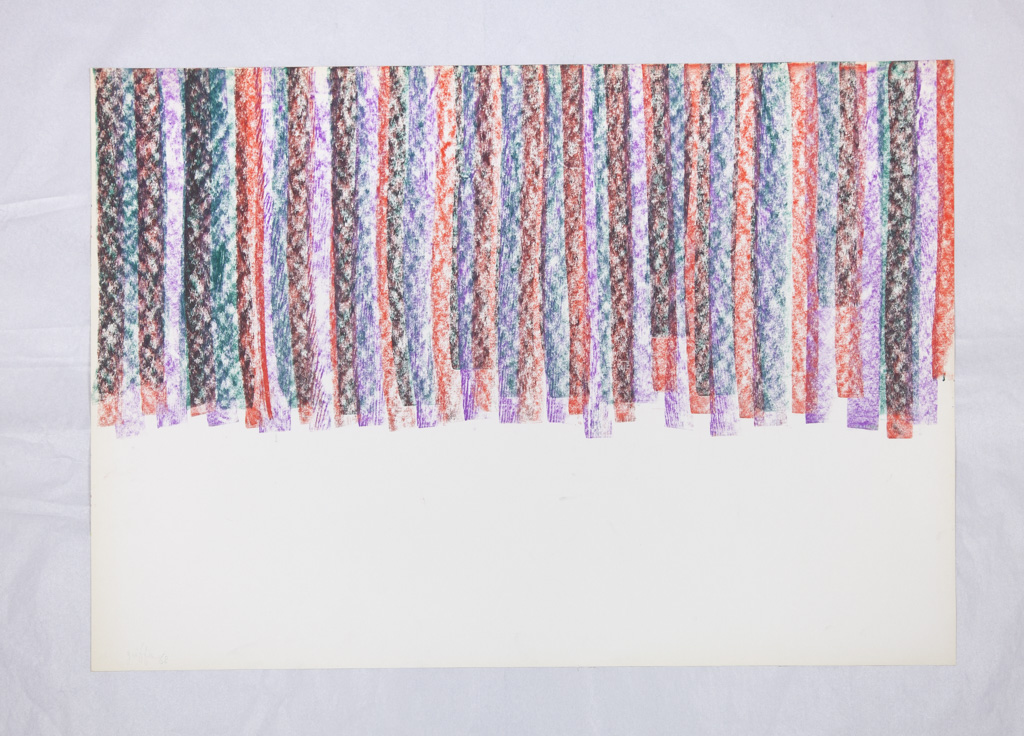Casey Kaplan

GIORGIO GRIFFA: WORKS ON PAPER
Curated by Andrea Bellini
The compulsion to repeat may manifest a lack of hope, but it seems to me that to continue to make the same thing over and over in order to arrive at different results is more than an exercise, it is the unique freedom to discover. Aldo Rossi, A Scientific Autobiography
On February 4th 2016, Fondazione Giuliani will present the first exhibition of Giorgio Griffa dedicated entirely to works on paper, curated by Andrea Bellini. The curator intends to highlight the significance of this aspect of the Turin-based artist’s practice, presenting around fifty-five works whose chronological arch spans from the end of the 1960s until today. Beginning in 1967 and continuing through to his most recent works, Griffa’s artistic research – one of the most important figures of Italian abstract painting and the neo-avant-garde – is based on three fundamental coordinates: rhythm, sequence and sign. A working methodology that the artist also consistently practices with drawing. As the artist himself maintains in an interview with Hans Ulrich Obrist (published in the exhibition’s catalogue), each drawing does not represent a “plan for a painting”, even if in many cases it provides ideas for later paintings, but instead constitutes an independent aspect of his work, a sort of parallel activity to painting. His delicate drawings and watercolours, often in different formats, express the power of his large canvases. Like those, they represent the constant verification of his visual language and its narrative and lyrical possibilities, expanding his repertoire without wanting to be definitive or closed exercises.
What is universal about Griffa’s works on paper, and his paintings, is the idea of the “memory” of the sign, the desire to want to individuate and practice a simple gesture that man has known and repeated for at least thirty thousand years, ever since the Palaeolithic period. Paper ceases to be a receptacle of the finished image, a definitive place, and instead becomes a physical fragment of a discontinuous, expanding space. His working methodology is simple but rigorous: the artist chooses each time the elementary components of his intervention, a sort of protocol of the making of the work. Depending on the size of the paper and the material (graphite, Indian ink, watercolour) he needs to choose the length of his signs, and thus their rhythm and direction. The next thing to do is to decide on the “place” where these signs should start. Very often the artist begins to trace the signs starting from the top left, as one does with writing, but the work could also begin from right to left, or from bottom to top. The drawing does not invade the surface according to an overall plan, but is rather destined to fill the space slowly, following a direction, rhythm and chosen frequency. The drawing up of the traits takes place in a state that the artist himself refers to as “passive concentration”: his hand and mind follow the chosen protocol in a state of meditative concentration, almost like in a Zen exercise. In the exhibition at the Foundation, one can follow the entire development of Griffa’s work, from the most minimal period from the end of the 1960s to the 1970s, through the more decorative and free period of the 1980s, until the last twenty years, when he has begun works with numbers (dedicated to the golden ratio) and more complex gestures.
The exhibition is in collaboration with the Centre d’Art Contemporain, Geneva, Bergen Kunsthall, Norway, and the Museu de Arte Contemporânea de Serralves, Porto. Two books have been published for the occasion by Mousse Publishing, Giorgio Griffa: 1965 – 2015 and Giorgio Griffa: Works on Paper.